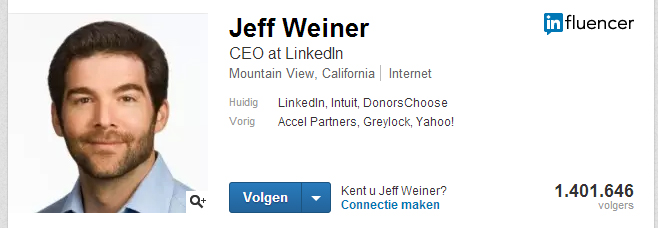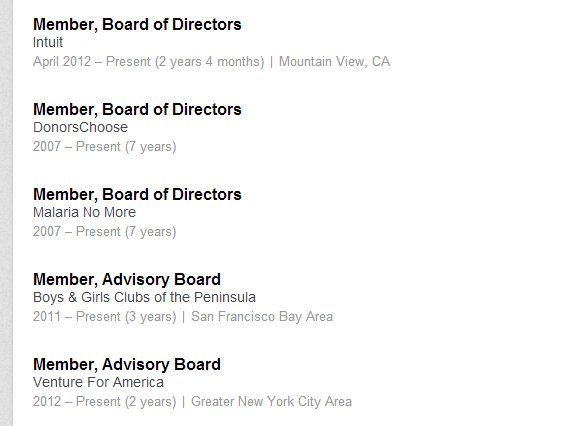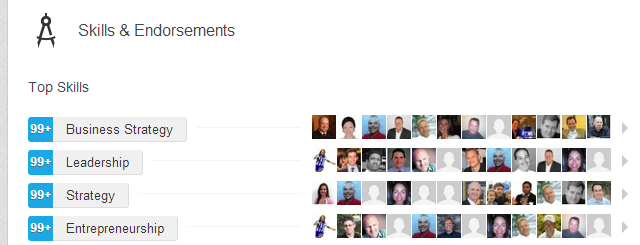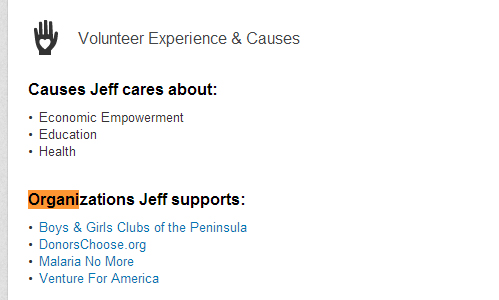Having a professional LinkedIn profile is hugely beneficial to your career as developer/designer/writer – some even consider it mandatory. But what is a professional LinkedIn profile? What should be included, and what left out?
In this article I will show you what employers find important when looking at your LinkedIn profile. I will also show you what to add as extra details for your development, designing or writing skills. In the end you will be able to create a detailed and professional LinkedIn profile you can be proud of.
The Basics
Profile picture

The phrase “a picture is worth a thousand words” is especially true for your profile picture. Of course your skills and experience are far more important than how you look, but you have to accept the fact that humans are visually oriented. Just make sure you look into the camera with your face fully shown. Try to laugh a bit as well, but don’t over-do it.
Headline
There are many different ways to fill in your headline. It’s quite simple when you’re the CEO of LinkedIn: lead with that title. But what if you’re a developer with multiple skills, and you don’t want to limit yourself by displaying just one title? In that case you should always keep in mind who will be screening your profile.
Most of the time it won’t be the same person you’re going to have have your interview with. Recruiters will skim through hundreds of profiles looking for PHP developers, for example. Make sure you are listed as one, but don’t get too technical in your headline.
It’s safe to assume recruiters only possess the most rudimentary knowledge about coding, just enough to select candidates. Their clients will be the ones interested in your specific skills, but that’s what your summary is for.
Summary
The summary briefly describes what kind of work you do, but more importantly: why people should hire you.
This is also where you should list your specific skills. If your headline is “Creative Designer”, fill in the applications you’re proficient with. If you’re a writer, use this space to clarify what you write about. Again, don’t over-do it; try to summarize as much as possible. Your goal is to get invited for an interview, where you can then elaborate on your skills.
Experience

This is where our LinkedIn CEO gets a bit sloppy, because in your experience list you need to specify more than just being a member as he does. Providing your job title is one thing, but what’s more important is how you performed at that particular task. Explain how you benefited the company or client and try to display specific achievements or results.
Being a freelancer is a great way of avoiding gaps in your profile, since it will always be displayed as “- Present”. This is also where you put in your ongoing clients, but it’s okay to display specific projects separately if they are worth mentioning.
Education
Your education is important, but not as important as your experience. Try to keep it brief, but include important achievements. Don’t include your publications here, since there’s a dedicated section for that purpose.
Contact information
You can include as much as you like. Phone numbers, your address, your Twitter and other social media accounts, and your website.
Groups / Following
You should always join a few groups and follow a few companies. Besides a great (and visual) way of showing your interests this also allows for group notifications. This way you will receive emails about questions other group members are asking, where you can chime in to show your expertise.
Making it fancy
Once upon a time, your LinkedIn profile couldn’t include more than the above listed basics. But nowadays there are tons of ways to make your profile stand out. Try to include some of the following items:
Skills & Endorsements

This one is a must, since it allows for your contacts to easily endorse your skills. LinkedIn even promotes this feature on top of every page.
Recommendations
This is something others have to fill in for you, but you can ask past or ongoing clients for a recommendation on your work. This is the most powerful way of showing what you do and how you do it. Don’t be afraid to ask, you’ll be surprised how many people happily give you a good recommendation. Especially when you return the favor.
Projects
Projects are basically shown as work experience, but in a separated list. They are specially useful when working with ongoing clients.
Publications
As with projects, these are in a different list to set them apart. Recruiters will look for this if you’re a professional writer.
Honors / Awards / Test Scores / Courses / Patents / Certifications
If you really have something special to show, you can use any of these specialized sections for it. Use these wisely since they can very quickly make your page look crowded, but this is the best way to display a patent, for example.
Volunteer Experiences & Causes

A special mention is reserved for this volunteering section. If you really contribute(d) to a specific cause, don’t be shy to put it on display. It shows something about who you are and what you stand for, and can also act as relevant work experience.
Links / Presentations / Pictures
Each of these items offers the option to include relevant links and attachments like PDF’s, PowerPoint presentations etc. You can even include YouTube movies if you like.
Don’ts
To make a professional impression, there are a few things you should not put in your LinkedIn profile (or try to minimize).
- A phone number as your headline: Why should people call you when they don’t know what to call you for?
- Writing “Looking for work” in your headline: Again, what do you do? Use something like, “Experienced PHP developer | Available for a new challenge” instead.
- Too many stars/check marks: Use them where appropriate, but only to highlight important skills or experiences.
- Changing your profile too many times: If you add skills, try to add several at once or publish without notification. People in your network soon get tired of seeing you in their update list every week. Besides, skills are usually learned over a longer period of time.
- Listing every little job you’ve had: Try to display only relevant experience in your list, and try to combine multiple functions within one company. It’s great you did every job McDonalds had to offer you when you were 16, but how relevant is that when you’re looking for design work?
- Look smarter than you actually are: It’s very appealing to include every study or course you briefly glanced at in your education list. But recruiters know how to deal with this, so you can be sure to get some tricky questions about it.
Conclusion
It will probably cost you a few hours to make a professional LinkedIn profile, but in the end it’s worth the effort. LinkedIn has really improved its service in the last few years, so even if you’ve already got an active profile it’s advisable to take some time and use some of the new elements.
When you start promoting your profile, you’ll soon find out how many people (and who) are actually going through your profile. LinkedIn keeps you notified of this, but it’s even better when you actually acquire a new job or client because of it. That’s what makes it all worthwhile.
When you want to take it up a notch and go even more professional, it might be time to think about building your personal portfolio site. Don’t forget to link to it from your LinkedIn profile.
Do you have any tips for creating a better LinkedIn profile?
 Jacco Blankenspoor
Jacco BlankenspoorJacco Blankenspoor is a website developer from the Netherlands, and is currently just building lots of different websites. When he is not working on HIPAAHQ.com you might catch him grinding coffee.

